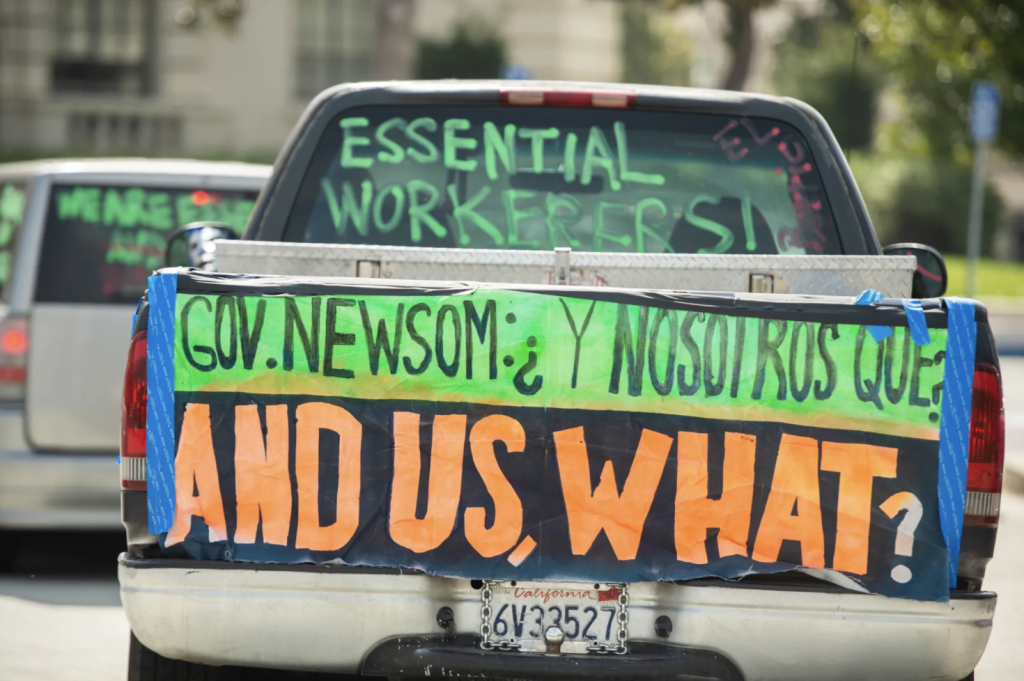
Those Left Behind: The Effects of the COVID-19 Pandemic on Undocumented Immigrants

The COVID-19 pandemic has had disproportionate effects on minority communities. Plagued by low vaccination rates, brought on by widespread vaccine hesitancy and structural barriers to access augmented by systemic racism, these communities face higher rates of infection and death. According to the Centers for Disease Control and Prevention (CDC), of patients who have received at least one vaccination dose, 67% identify as White while a slim 9% are Latinx, 7% are Black, 2% are American Indian or Alaska Native, and <1% identify as Native Hawaiian or Other Pacific Islander.6
Undocumented immigrants are being left behind
One group that is at particular risk of contracting COVID-19 and suffering more severe side effects is America’s undocumented population. As national mask mandates and social distancing policies are relaxed, putting unvaccinated individuals at higher risk of contracting the virus, the undocumented are often being left behind.
Over 11 million undocumented immigrants reside in the United States.5 According to a poll conducted by the Center for American Progress, approximately 5 million of them are essential workers. In addition to occupying higher risk positions, often working in crowded workplaces such as warehouses or on assembly lines, many reside in multi-generational, cramped housing that augments COVID-19 transmission risks.13 Not covered by the $2 trillion Coronavirus Aid, Relief, and Economic Security Act—despite being more likely to have lost their jobs as a result of the pandemic—and unable to access safety net health insurance programs like Medicare or Medicaid due to eligibility restrictions, many immigrants report being unable to afford treatment. Without government protections and with informal jobs that often pay well below minimum wage, many simply cannot afford to stay home despite stay-at-home orders, and may report to work while they are sick, putting others in jeopardy.2,7
An invisible community, disproportionate risks
“We are seeing this virus disproportionately impact racial minority populations. We are seeing it hit people who are in poorly paid, yet risky jobs … jobs that cannot be done via Zoom meeting,” said Margot Kushel, a physician who directs the Center for Vulnerable Populations at the University of California, San Francisco.10 “This community was going to be invisible,” said Juvencio Rocha-Peralta, executive director of the grass-roots Association of Mexicans in North Carolina, echoing this sentiment in a statement to the Washington Post.9 Both predicted the stark effects of the pandemic on undocumented populations.
Vaccination challenges: showing documentation, misinformation, political precedent
Furthermore, immigrants may be under the false assumption that they are ineligible to receive the vaccination, that it is costly, or that it may put them at higher risk for deportation or affect their immigration status. The Department of Homeland Security (DHS), consistent with ICE’s “sensitive locations policy,” has affirmed that it will not permit enforcement operations to be conducted near healthcare facilities, citing that access to the COVID-19 vaccine is a “moral and public health imperative.”8,12 However, recent US Government policy has hindered efforts to reach this vulnerable community. The Public Charge Rule, which went into effect in February of 2020 and tightened restrictions on immigrants’ utilization of government programs, have made undocumented immigrants increasingly worried about seeking out available social services. US Citizenship and Immigration Services issued a statement that the rule would be suspended for those being tested for or vaccinated against COVID-19, but this message hasn’t been widely disseminated.4,11
Furthermore, while testing is often not free, the US government has indicated that the vaccine will be made available to everyone at no cost, regardless of insurance or immigration status. However, many states have different registration criteria. 26 states restrict vaccine access to those who live and work in-state and require proof of residence when signing up for vaccine appointments.9 According to a recent poll by the Kaiser Family Foundation, only one-fourth of states’ vaccination websites indicate that appointments are available to undocumented immigrants.3 Fears about deportation may make many undocumented immigrants leery of showing identification at vaccination or testing sites. And language barriers, poor health literacy, a lack of technology to sign up for appointments (“racial tech gap”15), or transportation barriers—most immigrants reside in healthcare deserts, far from vaccine site locations—further exacerbate racial and ethnic divides in vaccination status that disproportionately affects undocumented populations.1
A moral and public health imperative
“Poverty, your inability to speak English, your immigration status should not be a cause of death,” Gina Miranda-Diaz, DNP, policy and legislation chair of the National Association of Hispanic Nurses-New Jersey Chapter, stated.14
Overall, asking for driver’s licenses, Social Security numbers, health insurance cards, or other forms of identification is invasive and unnecessary, burdensome for those who are undocumented. Anti-immigrant policies and barriers to receiving care should be removed to promote an increase in vaccination among this vulnerable population. Living up to the Department of Homeland Security’s promise to view vaccination as “moral and public health imperative” regardless of immigration status, states should take more proactive measures to reach the undocumented population in order to curb the spread of the pandemic.
References:
BCPHR.org was designed by ComputerAlly.com.
Visit BCPHR‘s publisher, the Boston Congress of Public Health (BCPH).
Email [email protected] for more information.
Click below to make a tax-deductible donation supporting the educational initiatives of the Boston Congress of Public Health, publisher of BCPHR.![]()
© 2025-2026 Boston Congress of Public Health (BCPHR): An Academic, Peer-Reviewed Journal
All Boston Congress of Public Health (BCPH) branding and content, including logos, program and award names, and materials, are the property of BCPH and trademarked as such. BCPHR articles are published under Open Access license CC BY. All BCPHR branding falls under BCPH.
Use of BCPH content requires explicit, written permission.